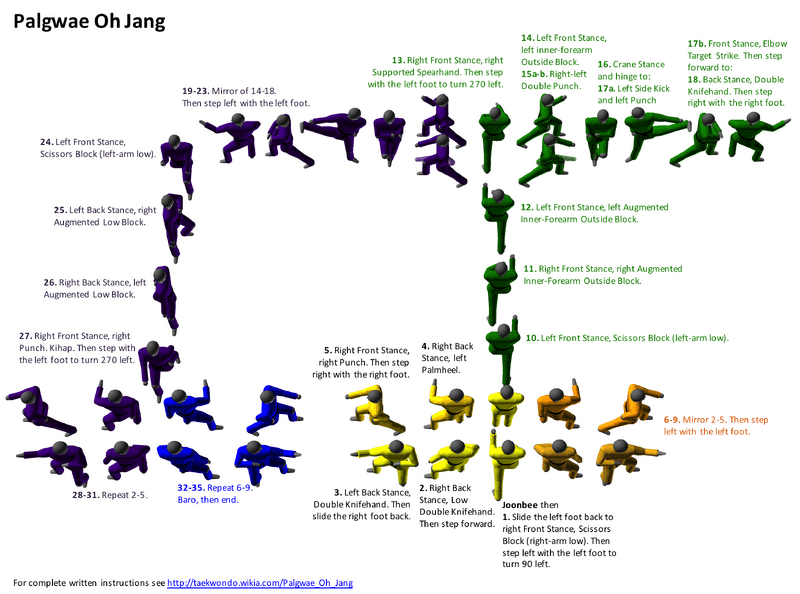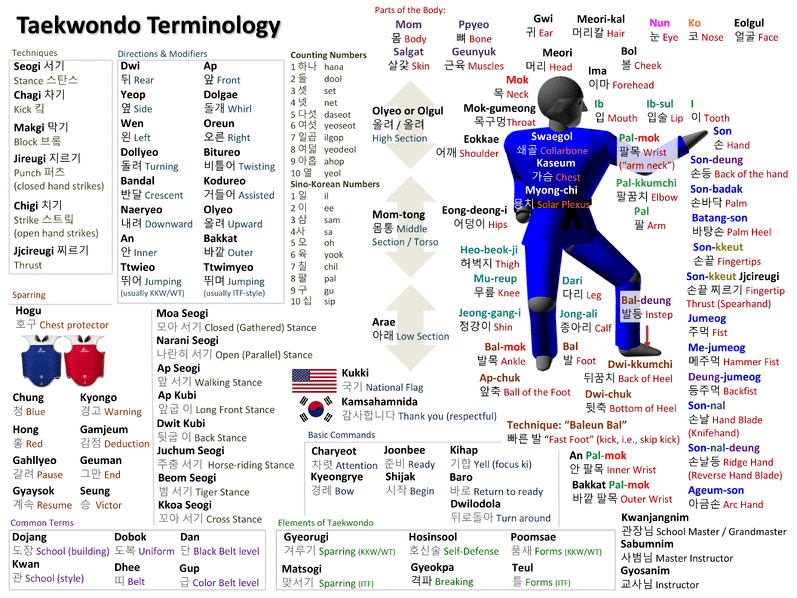Rough Rider
Green Belt
What terms do you use for double fist high block / double fist low block? My school uses Kara Momtong Mahki / Kara Arae Mahki. Looking online I only seem to find references to knife hand blocks (Sonnol).
Follow along with the video below to see how to install our site as a web app on your home screen.
Note: This feature may not be available in some browsers.
You can call them that but one hand is the leader, the other the helper. Always remember that.Are you referring to X-blocks? In which case we call them 'X-blocks'.
What terms do you use for double fist high block / double fist low block? My school uses Kara Momtong Mahki / Kara Arae Mahki. Looking online I only seem to find references to knife hand blocks (Sonnol).
No, not X- block. We call that Yeot Pero Mahki.
An example of what I'm talking about is found in Palgwe O-jang. After the initial scissors block, you turn to the left and do a double knife-hand low, followed by a double knife-hand high (Sonnol arae/momtong mahki). The blocks I'm talking about are the same except they have a closed fist. They come later in the form.
After turning toward the front, you do another scissors block followed by double-fist high (in long stance) twice. Later, after turning toward the rear, yet another scissors block followed by double-fist low (back stance) twice.

I'm a kung fu guy so I'm not familiar with any of the forms or names. However, I may be familiar with the technique that you speak of as there may be a similar technique in Jow GaPerhaps you're not familiar with the Palgwe forms. How about Taegeuk Sa jang? The very first move is double knife-hand high. Every site I checked agrees that this is called "Sonnol Momtong Makki" in Korean. My question is: what would you call it if you did the same move but your hands were closed in fists?
Good point, that's a bad habit throughout my school. I assure you we're not "waving our hands in the air like we just don't care"One nitpick: the blocks we're talking about aren't really low and high, they're low and mid-height.

Tae Kwon DoIt has nothing to do with Karate, Gnarlie. I only mentioned Karate before to describe the pronunciation. Here's how my instructors explained it:
Sonnol Momtong Mahgi
Sonnol = open or knife hand
Momtong = upper torso
Mahgi = block
Kara Momtong Mahgi
Kara = closed hand or fist
Momtong = upper torso
Mahgi = block
Substitute arae for momtong and it becomes a low block. The blocks are identical except for how you hold your hands.
Mahgi = block
Interesting read. What I took from it is that Kara can be a very general term for hand techniques, rather than the very specific closed fist that I've been taught. Like I said before, this isn't the first time the terminology has been questionable.
